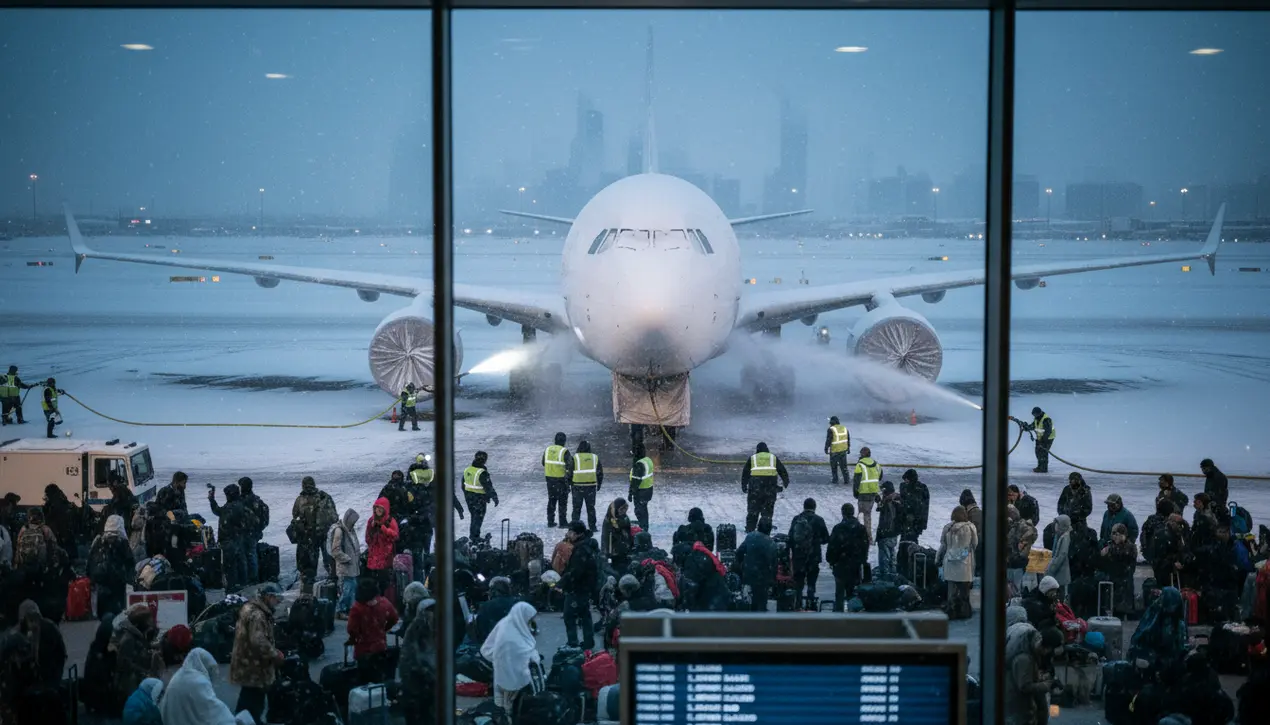
Otherweather & natural eventsExtreme Weather
Cold snap tied to polar vortex threatens Thanksgiving travel.
JO
John Parker
13 hours ago7 min read1 comments
A severe cold snap, directly linked to a destabilized polar vortex, is poised to disrupt Thanksgiving travel for millions of Americans, creating a perfect storm of meteorological and logistical challenges during the busiest travel period of the year. The National Weather Service has issued stark warnings, forecasting cooler-than-normal temperatures stretching from Seattle to Dallas and across the Midwest, a development that threatens to snarl what the AAA projects will be record-breaking holiday traffic.This isn't just a typical winter chill; the agency points to a confluence of three powerful drivers: the southward expansion of the Arctic's polar vortex, the influence of the Madden-Julian Oscillation—an eastward-moving pulse of atmospheric energy—and the ongoing La Niña climate pattern. Together, these forces are set to deliver winter-like conditions unusually early, with below-normal temperatures favored for the Central and Northern U.S. , including northern parts of the Pacific Northwest, the Great Plains, parts of Texas, and the interior Mid-Atlantic.The timing could not be more critical. The frigid air and snow are expected to arrive just as nearly 82 million Americans embark on Thanksgiving road trips and the TSA prepares to screen an estimated 17.8 million air travelers, with a single-day peak of over 3 million passengers expected on Sunday. The NWS indicates the extreme weather may begin impacting travel as early as Tuesday, with spatial coverage and confidence increasing throughout the Nov 26-30 period, directly coinciding with peak travel days.Specific threats are coming into sharp focus. The Climate Prediction Center highlights a moderate risk of heavy snow for the Central Rockies from Nov.29-Dec. 1 and for the Upper Great Lakes and the Interior Northeast from Nov.29-30, driven by the potential for significant lake-effect snow. Broader slight risks cover much of the Rockies and the Northern Tier corridor from the North Central U.S. to northern New England, with cooler temperatures potentially persisting into mid-December.Behind this immediate forecast lies a pressing scientific question: is climate change making these polar vortex excursions more frequent? While meteorologists like Jeff Berardelli note that stratospheric polar vortex disruption is a natural, almost annual process, multiple studies suggest that rapid Arctic warming may be increasing the likelihood of these events spilling southward. This remains an area of intense research, as scientists investigate the precise role of Arctic Amplification in altering long-standing weather patterns.The immediate consequence, however, is a massive test for the nation's transportation infrastructure. Airports from Chicago O'Hare to Denver International are bracing for cascading delays and cancellations, while highway departments across the Plains and Midwest are pre-treating roads in anticipation of treacherous driving conditions. This weather event underscores the growing vulnerability of modern mobility to atmospheric extremes, turning a holiday defined by family and gratitude into a high-stakes battle against the elements.
#polar vortex
#Thanksgiving travel
#cold snap
#snow
#record travel
#extreme weather
#featured
Stay Informed. Act Smarter.
Get weekly highlights, major headlines, and expert insights — then put your knowledge to work in our live prediction markets.
Comments
Loading comments...
© 2025 Outpoll Service LTD. All rights reserved.